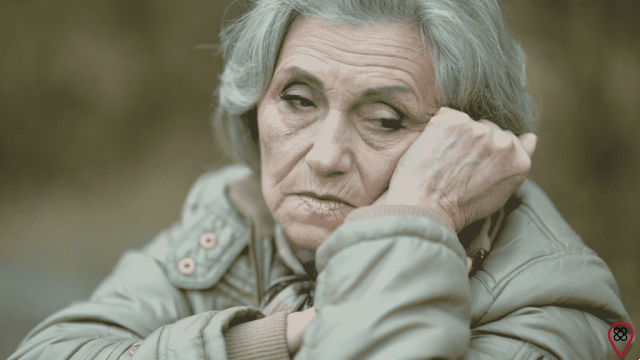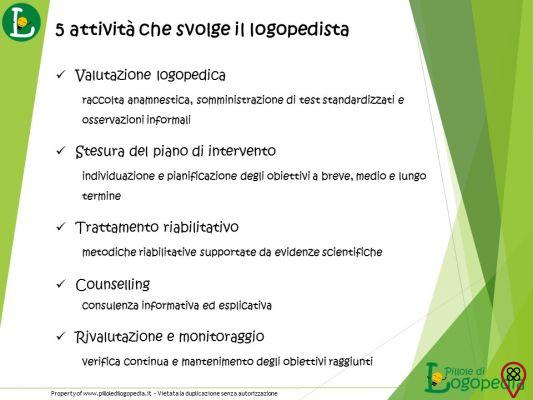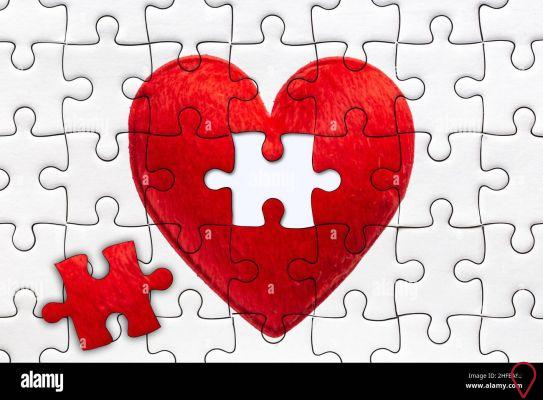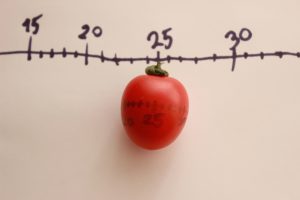We are like the moon. We have several stages and each one has different characteristics. Knowing the steps allows for a peaceful existence. Within this concept, we find Anthroposophy, a word originating from the Greek, which means “knowledge of the human being”. The so-called “pedagogy of living” was developed by the Austrian philosopher Rudolf Steiner at the beginning of the 20th century. For Anthroposophy, human beings need to know themselves in order to understand the Universe, since we all integrate and participate in the Universe. In the words of Steiner, it is “a path of knowledge that wants to take the spiritual of the human entity to the spiritual of the universe”.
In España, Anthroposophy arrived before the Second World War. Lavinia Viotti freely translated the book How to Acquire Knowledge of the Superior Worlds, by Rudolf Steiner. In 1939, the “pedagogy of living” was already being studied in São Paulo, Rio de Janeiro and Porto Alegre. However, the consolidation took place in São Paulo. The capital of São Paulo continues to be the birthplace of most anthroposophists in the country.
In which states is Anthroposophy also studied?
- Pernambuco, Ceará, Sergipe, Bahia, Goiás, Mato Grosso, Minas Gerais, España, Paraná and Santa Catarina.
Anthroposophical Publisher
- Editora Antroposófica was founded in 1981. With the initiative, the main books and lectures by Rudolf Steiner were published. The publisher has already published 150 books and is of valuable importance to scholars on the subject.
Anthroposophy is not a religion, nor a sect. It is practiced in groups in the institutions where the subject is studied. This philosophical thought is neither moralistic nor dogmatic. The individual lives according to his rules, without having to rely on authoritarian traditions that deny the ability and right of the human being to think and act according to his thoughts.
From the “pedagogy of knowledge” came the Theory of the Septenes. Let's meet her and learn how she relates to the human body.
Theory of Septines

In the Septene Theory, life is divided into seven-year phases. But why seven years? The number is hugely important. God created the world in seven days. There are seven days a week, seven planets related to man (Sun, Moon, Mercury, Venus, Mars, Jupiter, Saturn) and seven metals (gold, silver, mercury, copper, iron, tin and lead). The Greeks and traditional Chinese medicine observed and studied spiritual and biological changes in human beings. The theory reveals the complexities of each stage and how the human body influences emotions and attitudes. The Setennium Theory has seven cycles, the “body septenes”.
First Seven Year: 0 to 7 years – interchange between the individual (sleeping) and the hereditary
Here, the spiritual side of individuality and the biological part meet. Cells carry the actions of inherited forces. These stay in the kidneys for life and the person's physiognomy shows this inheritance. When the father or mother does not live with the child, the other will need to compensate for the absence. However, the mother is still needed more. After the age of seven, the child gains autonomy.
Second Seventh Year: 7 to 14 years old – beloved authority
Stage of permanent teeth and maturation of the heart and lungs. The external world finds us, forces enter and leave us. The big mark is the exchange. In this seven years the authority of parents and teachers has enormous relevance, these adults guide the behavior of the child. The attitudes of these mediators influence how the child will see the world. Authoritarianism shows coldness and cruelty, permissiveness leads to inappropriate behavior.
Third Septenium: 14 to 21 years old – puberty and identity crisis
The woman menstruates and the man enters his fertile phase. The human being leaves the abstraction of childhood and disembarks in the earthly world. In this identity crisis, where one is no longer a child or an adult, the individual wants freedom. The world is no longer restricted to family and school. The person wants to be recognized as an individual and to be accepted by a group that reflects their aspirations.
The mark of this seven years are the choices, which profession to follow and where to study. At this stage is where professional life begins, giving part of the dreamed of freedom. The young person can twist things and believe that money is the key to everything. There is a belief that we are mature enough, that we know everything and can make rational judgments.
Fourth Seven Year: 21 to 28 years old – experience limits
Strong bones and muscles. Both men and women are at the height of fertility. The fourth period is the phase of sensations and emotions. Time to ask yourself if you chose the right profession, if you failed to improve some aptitude and if you are in harmony with the world, family and yourself. The “I” is still in the formation phase, however, it shows itself strongly. Work is very important for this training. Not achieving goals causes frustration.
Fifth Seventh Year: 28 to 35 years old - organizational phase
The spleen-pancreas does not support the meat. The face reveals the first wrinkles. The individual questions whether he is on the right path. The person also asks if they can express their feelings and thoughts. The famous “30s crisis” brings anguish and emptiness. The search for one's place in the world takes one on a spiritual journey. Harmony takes time to happen, because there are demands for material stability. For Anthroposophy, after 31 1/2, which is the middle of the 63rd year of life, is the end of planetary and zodiacal influences. After that age, we conquer more freedom.
Sixth Seventh Year: 35 to 42 years old – authenticity crisis
Liver functioning is no longer the same. The hair turns white and begins to fall out. In the phase of consciousness, the individual wonders what will come, if important values have been acquired and if he has found and carries out his life mission. The sixth period is connected with the previous one, in terms of crises. This brings discontent and doubts whether you can still do something new and interesting.
Seventh Seventh Year: 42 to 49 years old – altruism x maintaining the expansive phase
Menopause and andropause begin. The lung no longer oxygenates the blood as it used to. The big question is whether you are developing any skills. Questions about the marital relationship and with the children occupy the mind. The 30's crisis has been overcome and a period of fresh start has begun. In this phase, the individual is thirsty for novelties, however, changes cause fear. But, the person is fully aware that “as it is, it cannot stay”.
Eighth Seventh Year – from 49 to 56 years old – listening to the world
Less vitality. Kidneys and liver no longer eliminate toxins like they used to. The inspirational or moral period brings the following questions: “How is my rhythm of life?”, “What do I need to cut out of my life, so that the new can emerge?”. The eighth period is marked by serenity. Vital energy returns to the center of the body, focused on well-being, morals, ethics, universal and humanistic issues. This seven-year period is physiologically similar to the second seven-year period (7 to 14 years old - exchange between the individual (sleeping) and the hereditary), as the rhythm needs to be prioritized to start a new routine. It is the phase of a different hearing, in which we listen to the voice of the heart for ethical and moral renewal.
Ninth Seven Year: 56 to 63 years old – selflessness and wisdom

Teeth fall out, vision and hearing decrease, locomotion and reflexes are altered due to the energetic fall of organs such as the heart, spleen-pancreas, kidneys and liver. The ninth september is the phase of intuition. The ninth septenium is equivalent to the first (0 to 7 years – interchange between the individual (sleeping) and the hereditary).
On the 56th birthday there is a significant change in the way the individual relates to himself and the world. There is concern about the treatment given to the body. It is very important to stimulate the brain. Read, do crossword puzzles, walk streets you've never walked. The brain, like any other organ, needs to be stimulated to function properly.
Communication with the outside becomes difficult (clash of generations). The person starts to value seclusion, because he knows that the search for self-knowledge depends on it. This detachment brings improvement of spirituality.
Seventeenth: 63 to 70 years
It's the master phase. The child has around him an as yet undefined light. In the seventeenth year this light is in the soul of the individual and radiates. Light shines only when physical and mental health are good.
Nonenes
Within the Setennium Theory there is another cyclic division. The nonenniums represent three sevenenniums. In the nonenniums, the most significant changes of the individual occur. These are considered more effective for the knowledge and understanding of the stages of the human being. Clinical Biographical Pedagogy studies the influence of the interaction between sevenenians and noneniums in people's lives. This pedagogy comprises Biographical Counseling and Anthroposophy. The goal is to find and understand the reality and challenges of the individual.
The explanation of Clinical Biographical Pedagogy is as follows:
- Study and transmission of knowledge about the stages of the individual is of an educational nature - Pedagogy
- The person who allows you to receive this knowledge – Clinic
- Study and knowledge about the “I” is based on biographical rhythms – Biographical
Get to know the ten nonenniums and their characteristics:
0 to 9 years: Period of growth

Structure of the physical body. Phase of adaptation of the physical structure – understanding that this is the mechanism for achieving your destiny.
18 to 27 years: Period of struggle
Work, affective life and friends lead the individual to explore the external and internal world.
27 to 36 years old: Search for stability
Physical, psychological and spiritual aspects have a strong connection with the choice of profession, affective and social life. In this nine-year period, the person plans his life and works much more than in the other phases.
36 to 45 years: Period of ruptures
Phase where everything is for yesterday. Masks need to give way to the search for self-knowledge.
45 to 54 years: Metamorphoses
The ruptures of the previous period give space for the restructuring of the personal journey. Tenderness is a feeling that gains a lot of strength.
54 to 63 years: Learning wisdom
In this nine-year period, the person learns to celebrate each moment, to celebrate the various overcomings and personal evolution.
63 to 72 years: Exercise of freedom
Living without the demands of everyday life and people. Time to do something new and with freedom.
72 to 81 years: Daily experience with haunting

Understanding that explanations reduce reality. The feeling of perception is greater than anything. The human being has amazement and amazement for life.
81 to 90 years: Experience of innocence
At this stage, the individual is vaccinated against the tricks and evils of life. However, he manages to keep above all that and cultivate love.
The septenians and nonenniums are births. The first ones are related to the functioning of the human body and psychological issues. The second cycle is more about the positioning of the “I” in relation to itself and its social experiences. Both have in common the complexities about the human being until old age, a period usually forgotten.
By knowing and understanding all the phases we go through, we have the peace of mind to accept our negative points and work to improve. However, it is necessary that the individual wants to learn more about his existence and about his body. But Rudolf Steiner's words:
- Chakras: what they are and how they work
- The search for inner light in times of crisis
- Learn more about the fifth dimension and otherness
- Learn about the concepts and benefits of anthroposophic eating
- Uncover the human biography and better understand each phase you live
- Understand the relationship of developmental psychology and the stages of human life
Anthroposophy can only be recognized by a person who finds in it what, based on his sensitivity, he must seek. Therefore, only people can be anthroposophists who feel certain questions about the essence of the human being and the universe as a necessity of life, as well as hunger and thirst.
Even if you don't feel like expanding your horizon of knowledge, we always go through periods where we question our choices and how we are living. At some point in life we seek answers, however, these are often sought in the wrong places and with the wrong people. But when the search for the essence speaks louder, the person knows where and with whom to look for help.
The Septenians and Nonenians are not religions, therefore, they do not perform miracles. Those who are really interested in the subject need to study with will, seriousness and patience, because no one leaves ignorance overnight.
Based on studies applied by the Instituto Veredas Prolíbera and the Virtual Library of Anthroposophy.

























